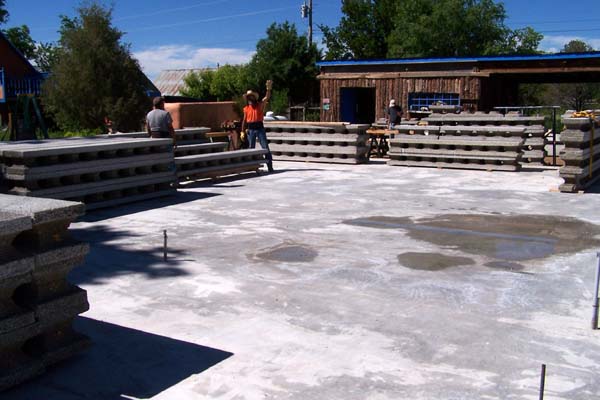Our crew is busy stacking the composite ICF block on the cement slab now that it has cured and is ready to receive the walls. Moving and placing the blocks took a bit of clever engineering and planning, as the large blocks used for this project weigh 200 lbs. each. We devised some small wheeled platforms with which to place each block on so it could be scooted and stacked and ready for placement.
Due to the sheer size of the blocks, the walls went up quicker than one would imagine for a building of this size. There was a bit of cutting of the blocks, so they could form around the window and door bucks, but again we opted for a creative solution to this challenge.
Norbert designed a clever jig which would fit on either side of a block and then could be cut using a hand saw. Each jig was pinned into each block with a standard pin used for prepping cement stucco plasters. One of our best investments was to purchase the saw available from the manufacturer, which was sharp and study and cut the blocks like a dream.
For those who may be curious or unfamiliar with the components of composite block ICF wall system, we’ll provide some insight. It is one of the few (if not perhaps the only) building material which makes use recycled styrofoam, a very unfriendly material to the planet, as you may know. There are also some similar ICF block products on the market which are roughly created in the same manner. If you are doing research, you may come across the alternatives online.
The styrofoam is tossed into a cement slurry and then formed into the blocks, to give perhaps the most basic explanation. The styrofoam being a fluffy and light substance when broken down, helps create the air spaces which give the block it’s high insulation value.


